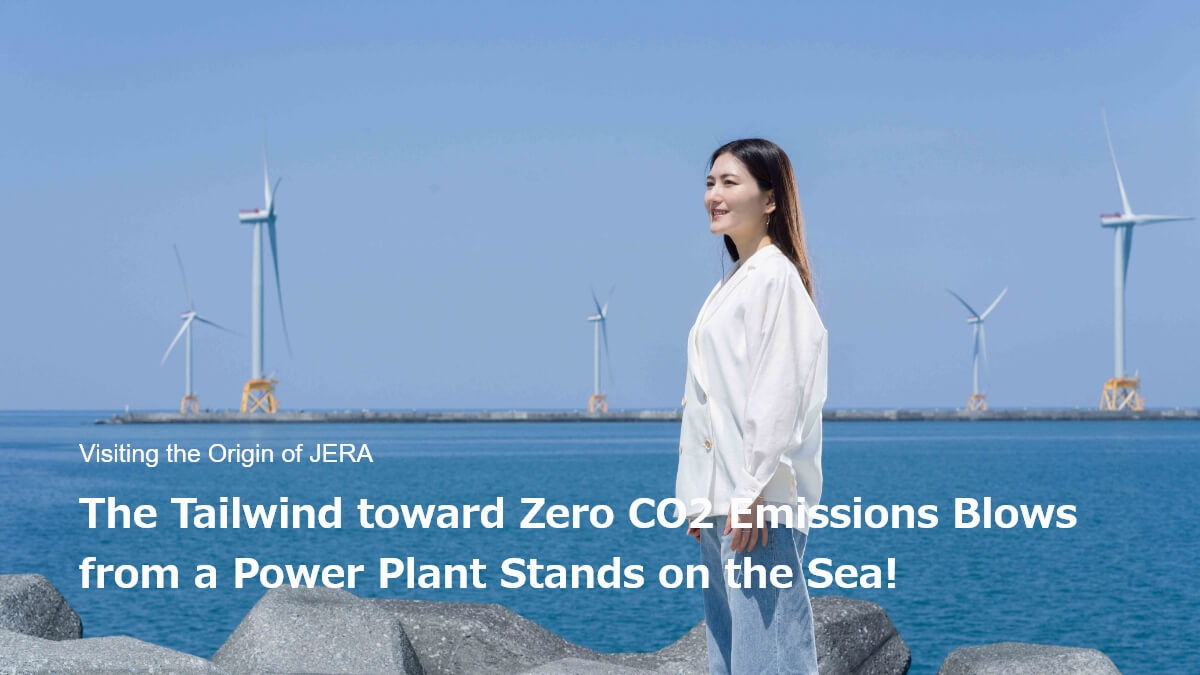
The Tailwind toward Zero CO2 Emissions Blows from a Power Plant Stands on the Sea!
27 June 2024
While the world has taken initiatives toward decarbonization, events such as the Russian invasion of Ukraine, which began in February 2022, have caused resource prices to soar.
The energy situation in each country has been greatly affected, and now there are calls for an energy security crisis. In these difficult times when the environment surrounding energy is changing dramatically, JERA is vigorously promoting “JERA Zero CO2 Emissions 2050”, which aims to achieve zero CO2 emissions from its domestic and overseas businesses to zero by 2050.
In this third article of “Visiting the Origins of JERA”, Ayako Tanaka, a soprano singer active on the world stage, visits the site of “another initiative” that is alongside “zero CO2 emission thermal power”, which is the key to JERA’s decarbonization.
INDEX
Another Pillar Supporting Decarbonization
I have two countries that I can call my homeland. One is Japan, where I was born and grown up. The other is Austria, where my musical activities are based. The biggest difference between Japan and Austria in terms of electricity is that about 80% of the electricity generated is renewable energy. Among them, hydroelectric power is a major factor. In Austria, with its expansive Alps, there are many rivers with abundant water, and hydroelectric power generation is thriving. In Japan, the current renewable energy ratio in the power source composition is about 20%, but the goal is to increase it to 36-38% by 2030 and Japan also takes initiatives to maximize the introduction of renewable energy such as solar power and wind power in order to realize a clean society.
I have visited JERA’s state-of-the-art thermal power stations twice and learned about stable electricity supply and “zero CO2 emission thermal power”, which introduces green fuels to generate electricity without emitting CO2.
1st visit: “Front Lines of Thermal Power Generation Where Electricity Is Born for Our Everyday Life”
2nd visit: “The Future of Energy starts Here! JERA Lights the Fire of Hope for Decarbonization.”
Having witnessed the site of zero CO2 emission thermal plant, I am excited to see the great progress this project will make towards decarbonizing Japan, but at the same time, when considering how this can be balanced with a stable supply of electricity, JERA is proposing an optimal combination of a variety of options. This time, I leaned about another major pillar of this option, “renewable energy”.
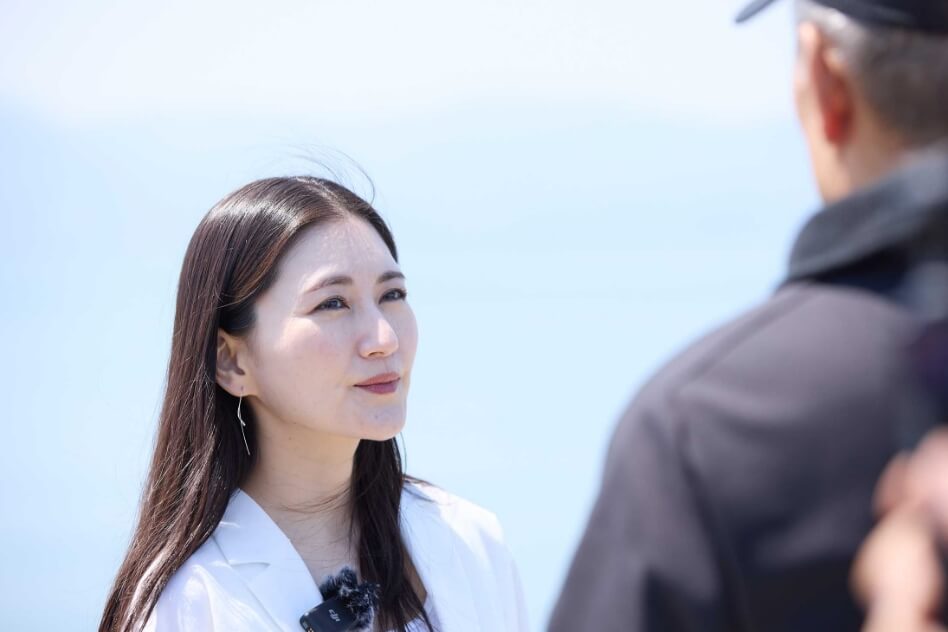
Infinite Energy Blowing over the Sea
This time, I visited Hokkaido, a northern land with magnificent nature. About 40 minutes north from Sapporo by car, I arrived at Ishikari Bay, overlooking the beautiful and sparkling Sea of Japan. When I arrived there, I didn’t have any questions about “What is going on here?” That’s because the 14 huge wind turbines standing on the ocean in front of me told everything.
This year, the Ishikari Bay New Port Offshore Wind Farm, Japan’s largest offshore wind farm, jointly owned by JERA and Green Power Investment Corporation, a major domestic wind power generator, started commercial operation in Ishikari Bay New Port, Hokkaido. Ryo Inada, the plant’s facility manager, talked about the newly built offshore wind farm as follows:
“The wind turbines are in an area 2.5 km to 4.0 km offshore from the port. There are 14 wind turbines lined up there, 500 m apart, in two rows, one on the land side and the other on the offshore side. The wind turbine we built this time is 196 m tall from sea level, and the diameter of the circular arc drawn by the rotating blades (wings) reaches 167 m. It might be hard to feel its size from the port, as it is too far away. For example, the Sapporo TV Tower is 147 m tall, so you can imagine that structures 50 m taller than that are towering over the sea. The total power generation of all the turbines combined is 112 MW. This will generate enough electricity to cover the annual consumption of 87,000 average households and reduce CO2 emissions by approximately 173,000 tons per year. This makes this wind turbines one of Japan’s largest offshore wind power plants.” (Inada)
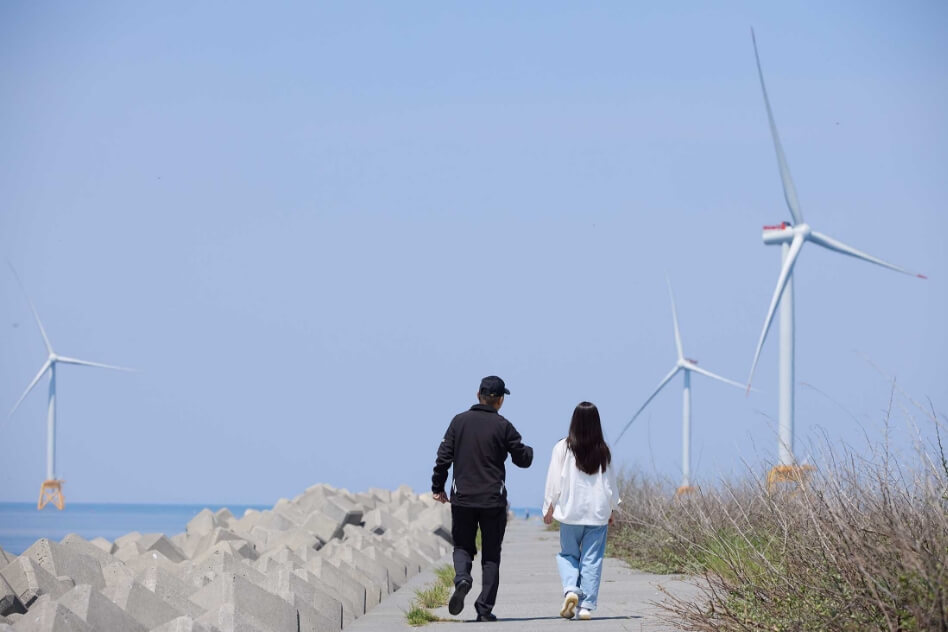
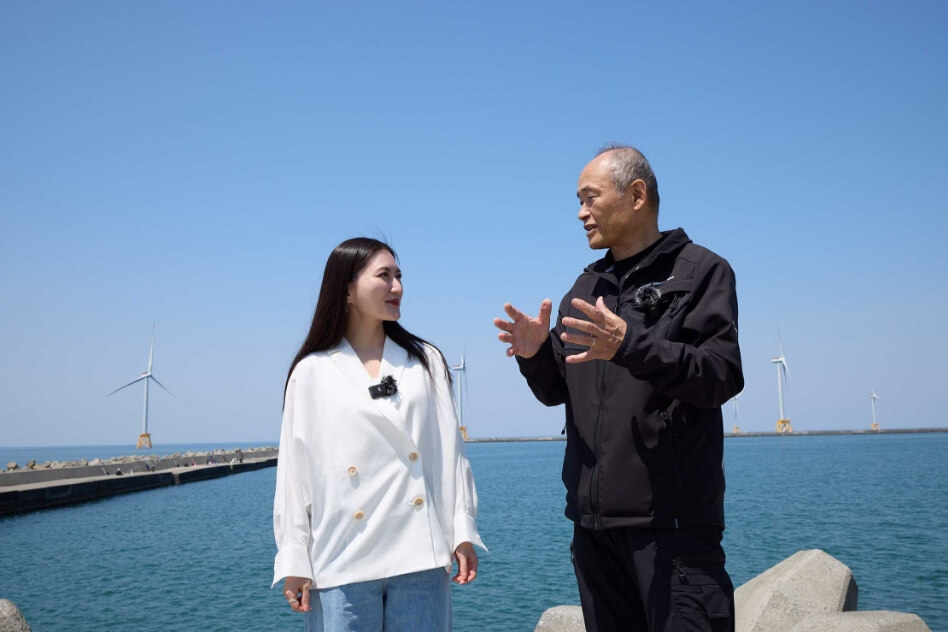
However, Japan does not have the image of being a leader in wind power generation. Rather, what comes to mind is the scenery in Europe, where I am currently active. There lies the difference in wind conditions between Japan and Europe.
“Europe, where the westerly winds blow throughout the year, is a region with favorable wind conditions for wind power generation. Europe has had a lifestyle and culture that utilized windmills since ancient times, and the technical know-how related to windmills has been passed down and continues to evolve over the years. However, in Japan too, the winds blow sufficiently to generate wind power.” (Inada)
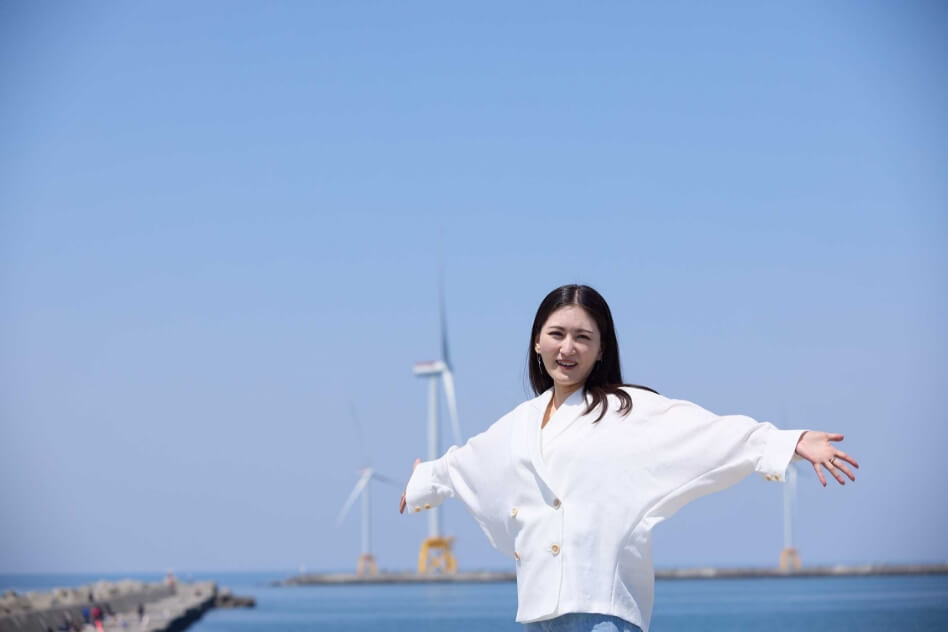
In Japan, “strong wind” means a “typhoon ”. However, Inada says, “typhoon winds cannot be used for generating wind power”.
“When a typhoon comes, the windmills are designed to stop automatically. The blades are adjusted to let the wind pass through, and they hold out until a typhoon passes. Our windmills can generate electricity at wind speeds between 4 and 28 m/s, but typhoon winds with speeds of over 28 m/s are too strong to generate electricity.” (Inada)
Typhoons are so strong that they cannot be utilized their full potential. This reminds us of the power of nature. On the other hand, what happens when the wind doesn’t blow? There are also cases in Europe where the lack of wind has affected the amount of electricity generated by wind power plants.
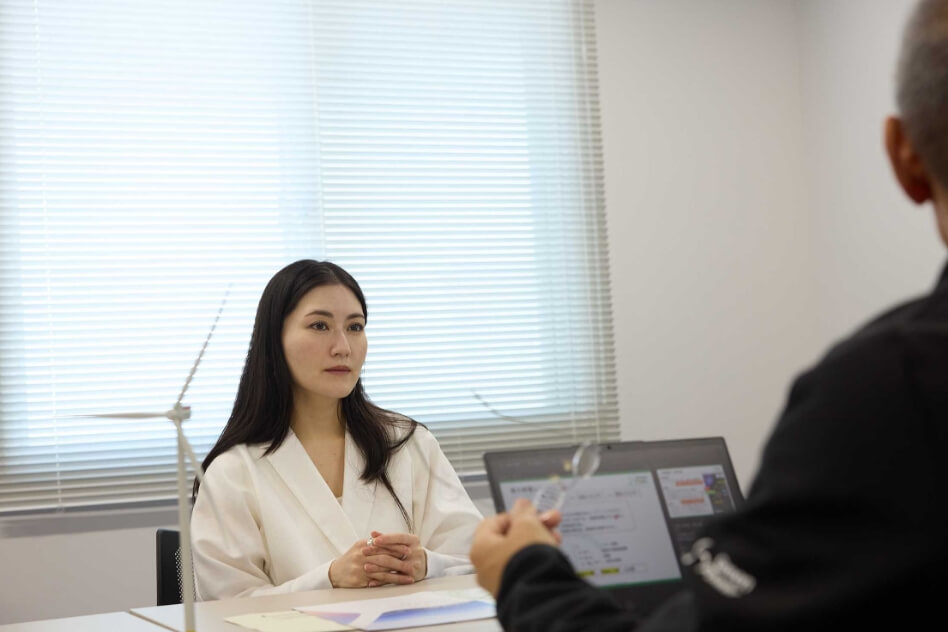
“The amount of electricity generated by wind power changes from moment to moment depending on wind conditions. It would be pointless to say that we couldn’t generate electricity because the wind wasn’t blowing, while our mission is to provide a stable supply of electricity. That’s why we’ve dealt with this by installing battery storage facilities on land. When wind conditions cause the amount of electricity generated to exceed demand, the storage batteries are charged, and when the wind doesn’t blow or demand for electricity increases, the batteries are discharged, and adjustments are made to prevent fluctuations in output.” (Inada)
Offshore wind power generation cannot generate electricity if the wind is too strong or too weak. Because it is not as straightforward as it seems, JERA is considering about to skillfully harness and utilize the power of the wind, and I could see their constructive approach to work on toward a better future than the present.
However, could JERA, with its roots in thermal power generation, start wind power generation overnight? Behind this lies a path they have taken, steadily moving forward step by step, with a belief in the potential of offshore wind power generation.
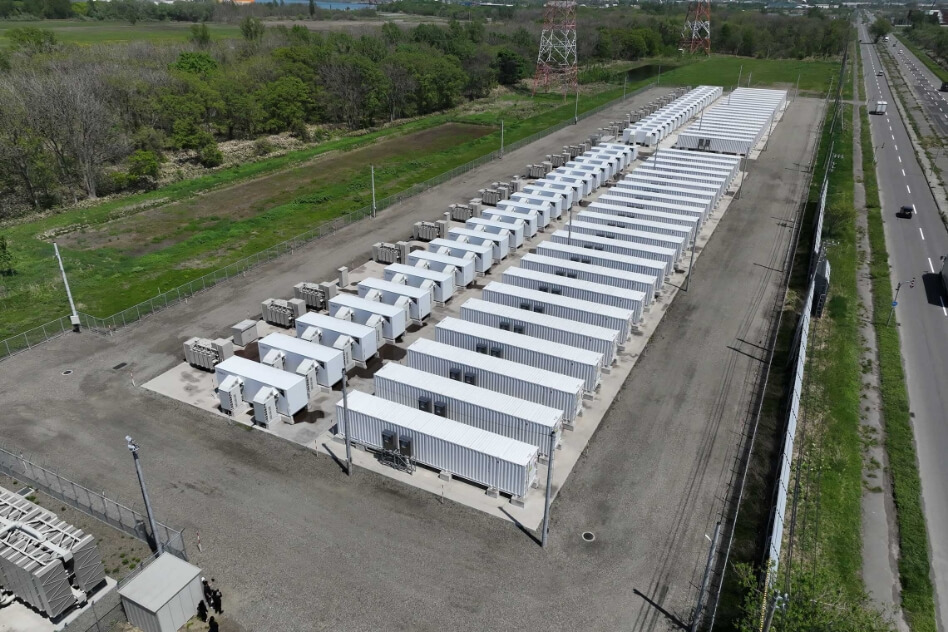
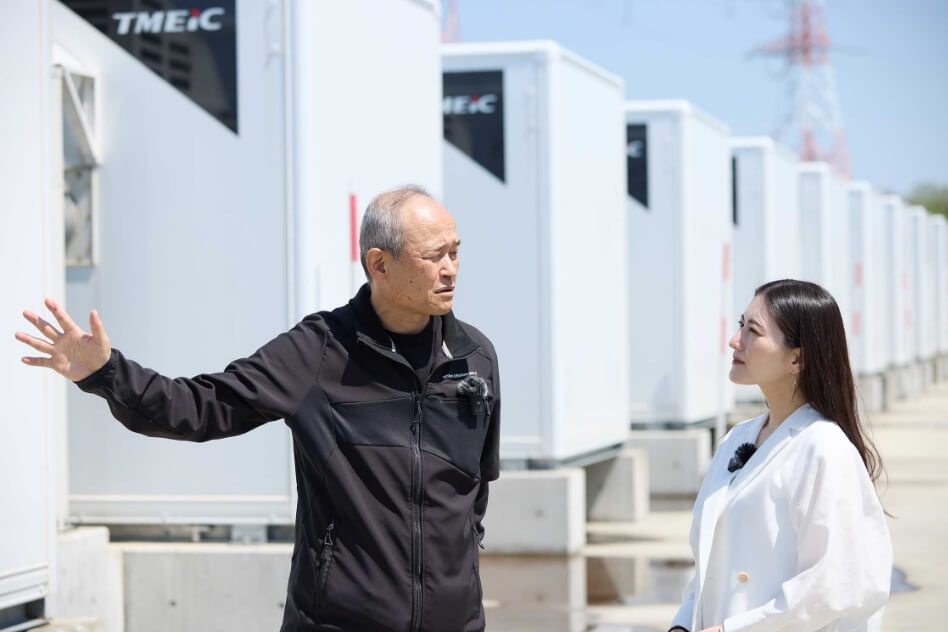
In 2019, JERA participated in the “Formosa 1” project in Taiwan, the first large-scale offshore wind project in Asia. It has also led the subsequent “Formosa 2” and “Formosa 3*” projects. In 2023, JERA acquired Parkwind, a major Belgian offshore wind power company, for approximately 1.55 billion euros, and in April of this year, it set a new renewable energy development goal of 20GW” by fiscal year 2035 and launched the renewable energy business company “JERA Nex” in the UK.
By cooperating with countries that are ahead of Japan in offshore wind power generation and continuously learning their know-how, I was convinced that renewable energy can become another pillar of JERA’s efforts to achieve decarbonization.
*The transfer of our business interests was completed in June 2023.
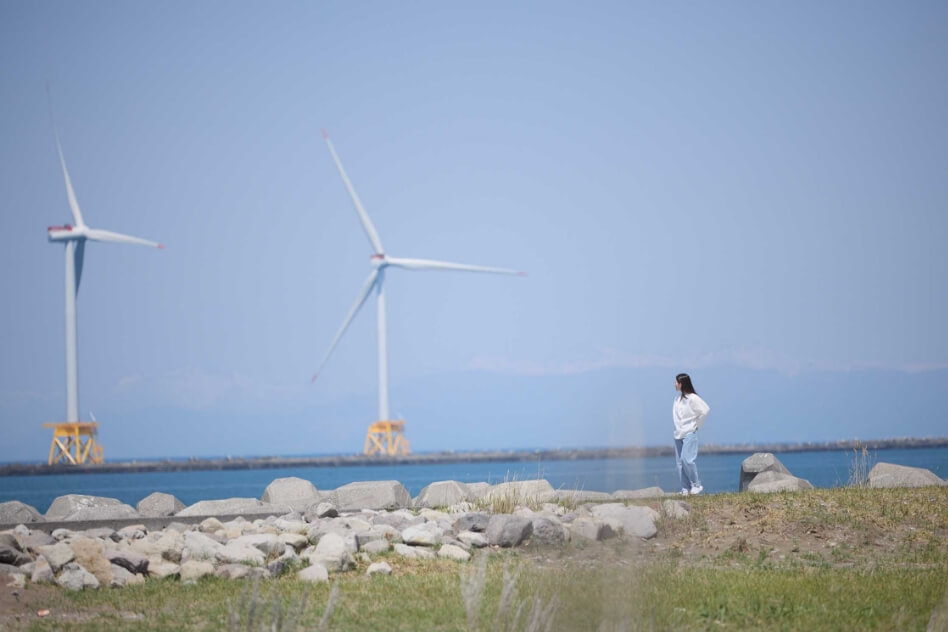
After the Visit
The Future Begins with Knowledge
JERA is taking on the challenge of “JERA Zero CO2 Emissions 2050”. Until now, we have tended to focus on “zero CO2 emission thermal power”, but this time, after visiting the Ishikari Bay New Port Offshore Wind Farm, I was reminded that they are also fully committed to utilize “renewable energy” and that it is important to utilize both to achieve decarbonization and stable supply.
I have visited various JERA power stations and met many people, which has allowed me to learn and think about the past, present, and future of energy. What I feel now is the importance of “knowledge”.
The world of energy is vast and complex, and it is not easy to understand everything. Furthermore, the current situation surrounding energy resources is unstable, and difficult decisions and actions are required for everything. In this context, “JERA Zero CO2 Emissions 2050” may seem like a very bold goal.
However, having seen the power generation site with my own eyes and touched the passion of employees who support our daily lives, I truly empathize with JERA’s efforts.
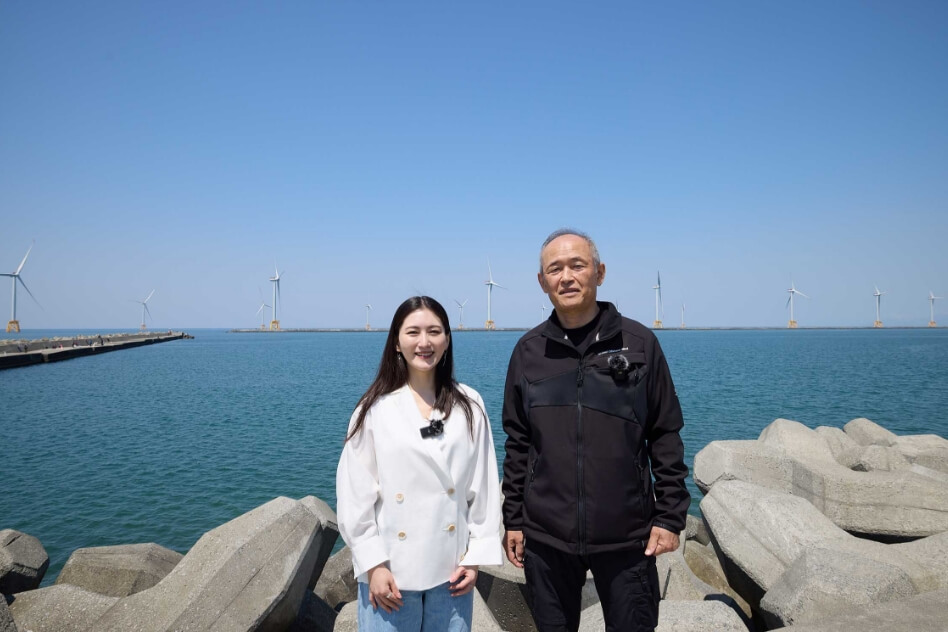
JERA’s goal is to maintain a stable supply of electricity, deliver it at an affordable price, and achieve decarbonization at the same time. The pillars of this approach are “zero CO2 emission thermal power” and “renewable energy”. The tailwinds accelerating Japan’s decarbonization are already blowing.
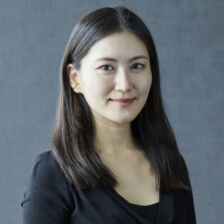
Ayako Tanaka
Soprano singer
President, Japan Association for Music Education Program
At the age of 18, Tanaka traveled to Vienna alone to study. At 22, she made her debut at the Stadttheater Bern in Switzerland, becoming the youngest soloist ever in the theater and the first Japanese person to perform there. Since then, she has performed in Vienna, London, Paris, Buenos Aires, and many other cities worldwide. Tanaka won “Best World Premiere Piece” by the Argentine Music Critic Association for her performance of Esteban Benzecry's “The 5 Cycle Songs for Coloratura Soprano and Orchestra" in Buenos Aires. The album received five stars from the BBC Music Magazine, the world's best-selling classical music magazine.
Tanaka is also engaged in giving back to society through activities such as the SCL International Youth Music Festival held in Vienna with the support of UNESCO and the Austrian government to assist young performers, as well as the National Youth Orchestra of Argentina, which was established with the support of the Argentine government to provide education to young people of various backgrounds and family situations through music.
Tanaka was named one of Newsweek's "100 Most Respected Japanese in the World" in 2019. She sang the Japanese national anthem on October 22 at the opening ceremony of the SMBC Nippon Series 2022. Born in Kyoto, Tanaka lives and works in Vienna.
RELATED STORIES
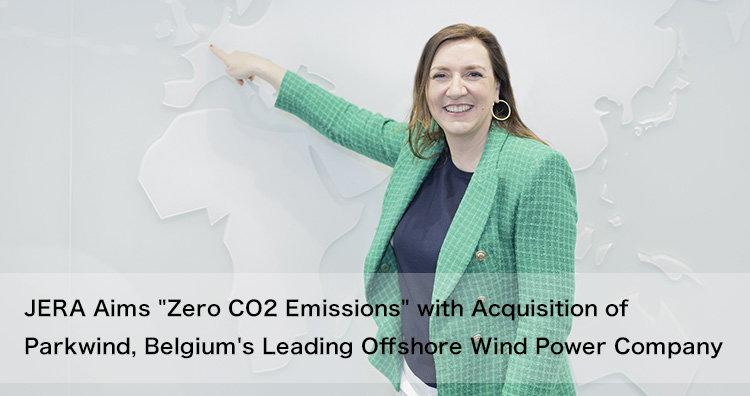
JERA Aims “Zero CO2 Emissions” with Acquisition of Parkwind, Belgium's Leading Offshore Wind Power Company
On March 22, 2023, JERA reached an agreement with Virya Energy, shareholder of Parkwind, a major Belgian offshore wind …
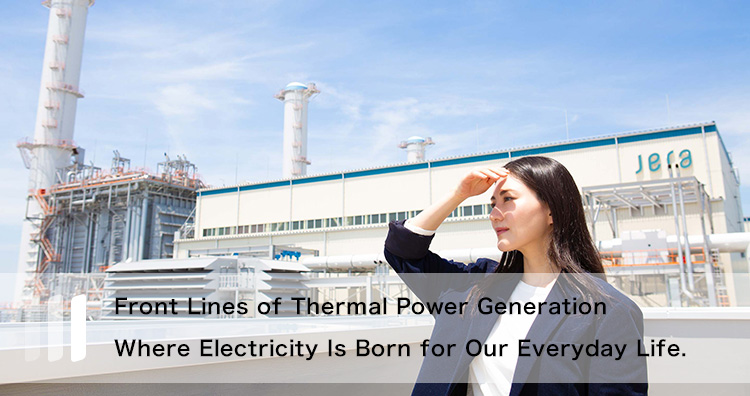
Front Lines of Thermal Power Generation Where Electricity Is Born for Our Everyday Life.
Ichihara City and Futtsu City in Chiba Prefecture face Tokyo Bay. Both cities are home to JERA's world-class thermal …

The future of energy starts here! JERA lights the fire of hope for decarbonization
The company is about to take a new step forward at Hekinan Thermal Power Station in Hekinan City, Aichi Prefecture.

